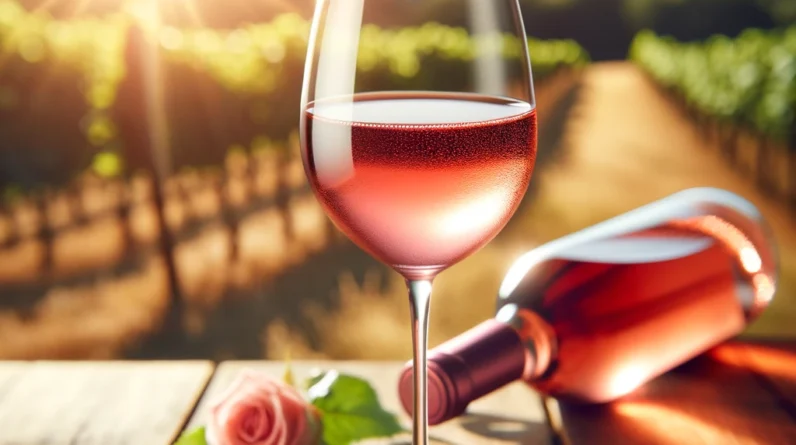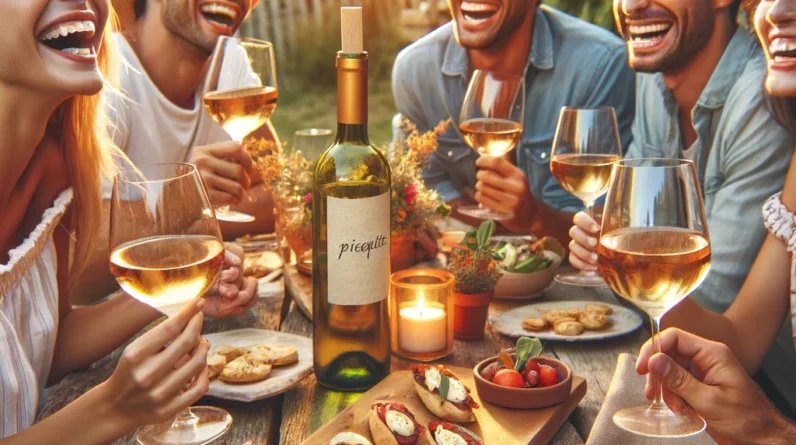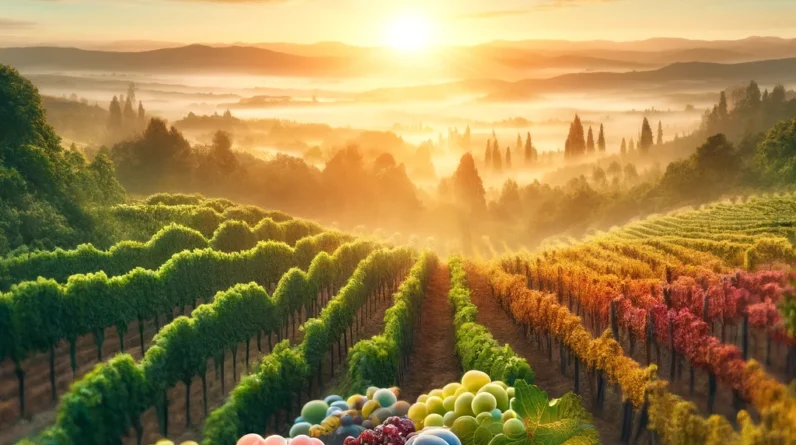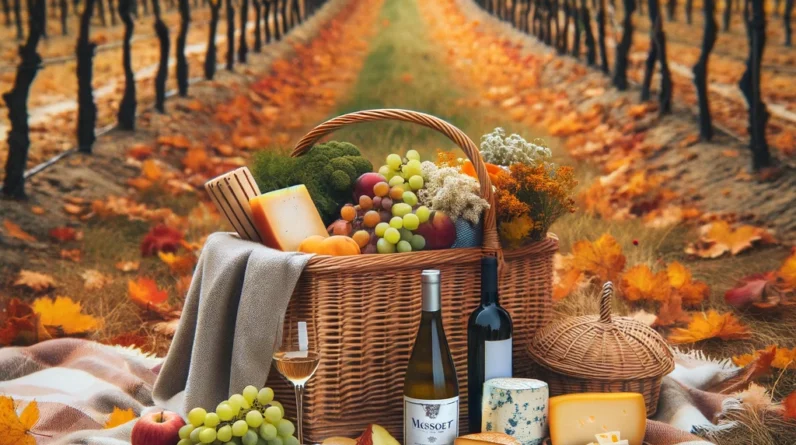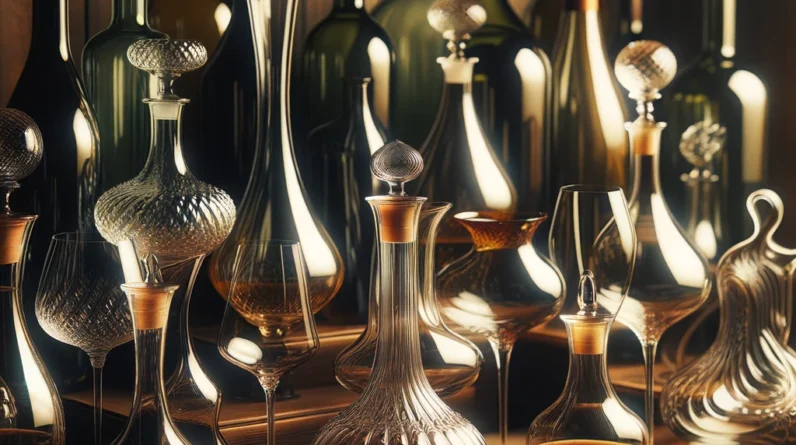
Wine tasting is more than just a sip and swallow.
It’s an art.
Every glass tells a story, a fusion of culture, nature, and centuries-old traditions.
If you’re a newbie to this world, welcome!
Let’s embark on a flavorful journey and demystify the art of wine tasting, step by step.
Setting Up for the Perfect Wine Tasting Experience
Ever tried to meditate in a noisy room?
Tough, right?
Same goes for wine tasting.
Your environment plays a role.
Before diving in, make sure:
- Your surroundings are calm.
Steer clear of strong perfumes, loud noises, or excessive heat.
They can distract your senses. - Your glass is on point.
The right glass can elevate your wine experience. - Your wine is well-prepped.
Remember: White wines need a slight chill, while red wines appreciate being just below room temperature.
The Five Essential Steps of Wine Tasting
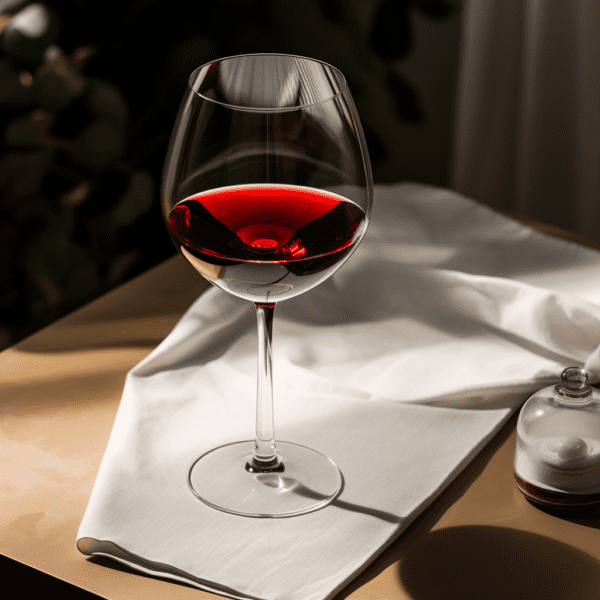
See
Peek at its color.
Notice any sediment?
That’s okay for reds.
Just let it settle.
Wine offers a visual treat even before it graces your palate.
The first step in the renowned 5 S’s of wine tasting is “See”, and it holds a wealth of information.
Inspecting for Details
While your primary focus might be on the color intensity and hue of the wine, there’s more to discover.
Look out for bubbles—this can indicate if you’re dealing with a sparkling wine.
Notice the legs forming on the glass?
That’s a potential sign of the wine’s sugar and alcohol content, especially evident after you give your wine a swirl (step 2 of the 5 S’s).
Sediments and More
Spot any sediments?
These could range from harmless tartrate crystals to grape seeds or stems.
While sediments might not always indicate a quality concern, they do speak about the wine’s processing and aging.
Diving Deeper into Color
For the wine aficionados, the color intensity and opacity can unveil fascinating insights.
A wine with intense color might hint at a pigment-rich grape skin, suggesting specific grape varieties.
It could also be indicative of the winemaker’s choice, where the grape juice had extended contact with the skins.
Moreover, color is a quick guide to identifying the type of grape used.
Reds come from red grapes and whites, primarily from white grapes.
But delve deeper, and you’ll see variations—some grapes produce a lemon-hued wine, while others might be more golden.
A Glimpse of Age
The color of a wine can also be a subtle nod to its age.
If you’re familiar with the WSET (Wine & Spirit Education Trust) lexicon, terms like amber and garnet stand out.
These colors suggest oxidative aging, a characteristic that often comes with time spent in a bottle.
While amber or garnet hints could suggest a few years of aging, those leaning towards brown or tawny might indicate a wine that’s been aged for decades.
By paying attention to the subtle cues of a wine’s color, you not only enhance your tasting experience but also your understanding of the wine’s journey from vineyard to glass.
Swirl
Give it a gentle swirl.
This dance with oxygen awakens its aromas.
Those streaks on the glass sides?
They’re called “legs”.
They can reveal a lot about the wine’s body and alcohol content.
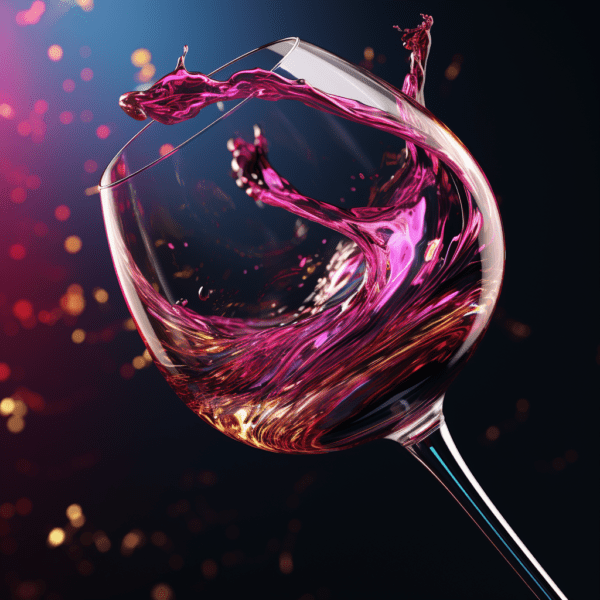
The Art and Science of Swirling Wine
The act of swirling wine in a glass isn’t just for show—it’s a fundamental step that paves the way for a richer tasting experience.
When you swirl, you’re doing more than just moving the wine around.
Revealing the Legs
After giving your wine a good swirl, allow the glass to remain still for a moment.
Notice the streaks or “legs” that form and slide down the sides of the glass.
These legs can be quite telling.
Thin, widely spread legs may hint that the wine is dry (lacking sugar) or perhaps lower in alcohol.
On the other hand, thick, closely spaced legs often indicate the presence of sugar, a higher alcohol content, or both.
It’s a captivating dance of physics and chemistry playing out right in your glass.
Swirling is an integral part of wine tasting.
It’s an invitation to the wine, asking it to reveal its secrets.
As you swirl, you’re not just preparing the wine for the next steps of smelling and tasting—you’re actively engaging in a dialogue with it, coaxing out its stories and nuances.
Smell
Dive nose first.
Breathe in deeply.
Catch any hints of fruit or wood?
That’s the aroma working its magic.

Delving Deeper into the Symphony of Wine Aromas
Engaging with a wine’s scent is like opening a book of stories, each aroma revealing another chapter of its journey from grape to glass.
While the essence of the wine tantalizingly unfolds with each sniff, the approach to capturing its full spectrum varies among wine lovers.
Methods of Inhaling
The relationship between the human nose and a wine’s aroma is intimate and diverse.
Some aficionados prefer to hover their nose slightly above the wine glass, taking a deep inhale with their mouth slightly ajar, allowing for an unobstructed flow of air.
Others opt to dive in, immersing their noses deep within the glass, believing that this closeness can capture the wine’s true essence.
There’s also the technique of smelling from the top to the bottom of the glass edge, given that different aromas might accumulate at varying spots.
Some even challenge their senses by seeing how far from the glass their nose can detect the wine’s aroma.
Intensity and Identification
One of the primary goals of smelling wine is gauging the intensity of its aromas.
This is a subjective experience, but understanding the relative intensity can sometimes give clues about the grape type.
For instance, certain grapes are renowned for their aromatic potency.
Isolating specific aromas can also offer insights.
While white and red grapes have distinct aromatic profiles, some wines have signature scents.
The whiff of green apple combined with a hint of petrol?
You might be enjoying an aged Riesling.
A grassy note is a hallmark of Sauvignon Blanc.
Categorizing Aromas
Venturing deeper into the olfactory exploration, wine aromas can be broadly classified into three categories:
- Primary Aromas: These originate from the grape itself.
They encompass a wide array of scents ranging from fruits and flowers to certain spices. - Secondary Aromas: These are the handprints of the winemaker on the wine.
They arise from choices made during the winemaking process.
A scent of vanilla or cedar might hint at the use of oak barrels, while a creamy note could be the result of malolactic fermentation. - Tertiary Aromas: These are the whispers of time.
As wine ages, either in barrels or bottles, it develops rich, deep scents such as leather, tobacco, and nuts.
- Primary Aromas: These originate from the grape itself.
The world of wine aromas is vast and varied.
While seasoned sommeliers might deduce a wine’s type or origin from its aroma, for most of us, the journey is more about personal exploration and less about precise identification.
But every sniff, every note, brings us closer to understanding the heart and soul of the wine we’re savoring.
Sip
Here comes the fun part.
As you sip, let air play with the wine in your mouth.
Feel the flavors, from primary grape notes to the complex notes that come with age.

The Art of Sipping: Engaging All Your Taste Buds
Sipping wine is not merely about quenching one’s thirst or feeling the caress of the liquid on the palate; it’s a ritual.
When you raise a glass of wine to your lips, you are on the cusp of unlocking myriad flavors hidden within.
The act of sipping can be simple, or it can be an intricate dance involving every nook and cranny of your mouth.
The Casual Sip
At its most basic, you can approach wine tasting with relaxed ease.
Simply take a sip, allow it to dance on your palate, swallow, and let the flavors weave their story.
There’s no hard and fast rule that says wine tasting has to be a solemn affair.
Enjoying it casually and discussing the flavors that emerge is as valid a method as any.
For the Connoisseur
But for those who wish to delve deeper, there’s another approach.
This method is akin to a choreographed dance, designed to ensure every aspect of the wine is captured.
Here’s how it works:
- The First Sip: Start with a small sip.
Don’t be hasty to swallow.
Instead, swish it around, ensuring it touches all parts of your mouth — from the tip of your tongue to its back, from the roof of your mouth to the gum lines.
This swishing not only aerates the wine but also ensures every taste bud gets activated. - Wait and Absorb: Once you swallow, give yourself a moment.
Let your tongue adjust.
The first sip might have been a shock to your system, especially if the wine is particularly robust or acidic.
Waiting lets your mouth acclimatize, preparing it for a more nuanced tasting. - The Second Sip: Now, take a more generous sip.
This time, with your mouth already introduced to the wine, you’re in a better position to pick out subtle flavors and undertones.
- The First Sip: Start with a small sip.
Through this meticulous method of sipping, you ensure that no note goes unnoticed, no flavor undetected.
You immerse yourself fully, allowing the wine to reveal all its secrets.
Whether you opt for a casual sip or a more in-depth exploration, what’s most important is the experience.
Remember, wine tasting is about enjoyment, discovery, and the pleasure of the moment.
Savor
Ah, the finale.
Feel those flavors linger?
That’s the wine’s finish, and it can say a lot about its quality.
The Essence of Savoring: Lingering Elegance on the Palate
Wine has a way of whispering its tales long after it has graced our palate.
The savor, often intertwined with the finish, is the epilogue to our wine tasting experience, that final impression which can seal the memory of a wine in our minds.
It’s about how the wine’s flavors and sensations linger and evolve, letting us reminisce about the journey we’ve just undertaken.
Understanding the Duration
Savor is, in essence, a measure of time.
How long does the wine’s flavor hold your attention after you’ve swallowed it?
Just as a compelling story stays with you long after you’ve read the last word, a wine’s finish can be its lasting legacy.
It’s that final note in a song, the one that resonates in silence.
- Short Finish: If the taste of the wine dissipates almost immediately, within a fleeting second, it’s termed as having a short finish.
While it doesn’t necessarily denote a lack of quality, it might leave you wanting more or pondering the transient nature of the experience. - Medium Finish: Wines that linger for a few seconds, offering a glimpse of their depth without overstaying their welcome, fall into this category.
It’s like the lingering note of a piano, neither abrupt nor prolonged. - Long Finish: A wine that demands attention, whose flavors stay prominent for five seconds or more, has a long finish.
It’s the kind of wine that encourages contemplation, making you muse over its complexities and intricacies. - More than Just Time: Beyond duration, the nature of the savor matters.
Is it harmonious, echoing the wine’s main characteristics?
Or does it reveal something new, a surprise twist in the tale?
A good finish can elevate a wine, while an off-note can detract from the overall experience.
- Short Finish: If the taste of the wine dissipates almost immediately, within a fleeting second, it’s termed as having a short finish.
By paying attention to how a wine finishes, you gain insight into its structure and craftsmanship.
After all, in wine as in life, it’s often the final impressions that linger the longest.
Whether it’s a brief touch or a lasting embrace, savoring wine is about cherishing those lingering moments and the stories they tell.
Describing the Taste of Wine
Wines have personalities.
Some are bold, some reserved.
But all have a structure:
- Tannins: Ever felt a dry sensation with some wines? That’s the tannins at work.
- Profile varieties: Wines can be creamy, acidic, or somewhere in between. It’s all about balance.
Common Terms Used in Wine Tasting
Confused by wine lingo? Let’s break it down:
- Acidity: That tingling sensation? It’s the wine’s acids making your mouth water.
- Balanced: It’s when everything in the wine – fruit, alcohol, acidity – is in harmony.
- Body: Think of it as the wine’s presence in your mouth. Some wines are full and rich, others light and airy.
- Bold vs. Elegant: Bold wines shout their flavors. Elegant ones whisper.
- Bouquet: This fancy term just describes the wine’s aroma. Think fruits, flowers, and sometimes even chocolate!
- Complex: Some wines evolve as you taste them. They’re the complex types.
- Finish: It’s about the aftertaste. Good wines have flavors that linger, making you crave another sip.
- Minerally: Not fruity or spicy, but with a distinct tang.
- Oaky: Ever tasted vanilla or smoke in your wine? That’s the oak barrel influence.
- Zesty: Imagine a burst of citrus. That’s a zesty wine for you.
Wine tasting is a journey, a blend of science, tradition, and personal preference.
As a beginner, every sip offers a new lesson, a fresh perspective.
So, keep exploring, trust your palate, and remember, the best wine is the one you enjoy.

Dive into the world of wine tasting and share your experiences in the comments.
Found this guide helpful?
Share it with a fellow wine enthusiast!
FAQs:
- Is wine tasting just about flavor?
No, it’s an experience engaging all your senses. - Does the color of the wine matter?
Absolutely. It can reveal a lot about the wine’s age and strength. - Is it necessary to swirl the wine?
Swirling helps release the wine’s aromas, enhancing the tasting experience.
Resources:


